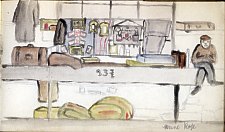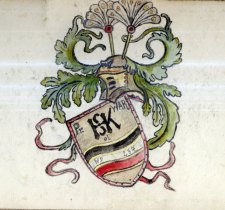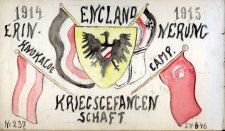
1914 England 1915
Remembrance
Knokaloe Camp.
War Imprisonment
First page of sketchbook - the number 237 is repeated in several of the sketches and is possibly his camp number
? - the other number is ZN646.
His signature is on the end leaf: A self portrait on his bunk is the final image (#37)

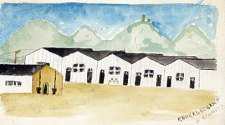
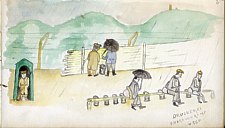
2: Titled Druckerei Knokaloecamp -
Printing shop - Knockaloe camp - an interesting euphemism for a rather rudimentary outside latrine.
The Press report on a visit made late November 1914 stated that "there is room for improvement in the sanitary accomodation"
3: Titled Frauen eines Kriegs gefangauen 3-3-15
Wives of the Prisoners of War
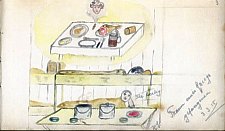
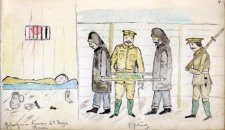
4: Titled Gefangen dann 41 tage Heim - Captured - then 41 days "home"
5: Titled Abendunterhaltung - Evening Entertainment
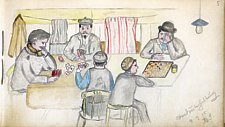
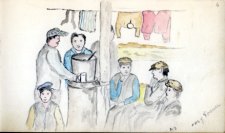
6: Cosy Corner
Presumably because it is next to one of the small heaters in each hut
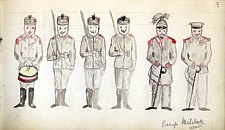
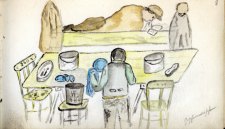
8: Titled Geschirrabwaschen
Washing up the pots and pans - the task of cleaning up after the meal rotated between the men allocated to each table.
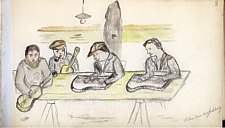
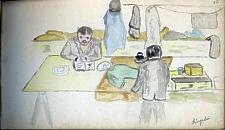
10:Titled Bügelei - Ironing
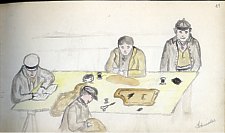
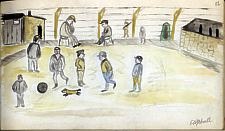
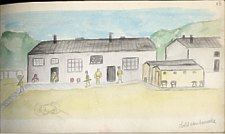
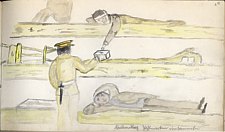
14: Titled Nachmittag Zählmarken einsammeln
Afternoon collection of tokens [?brass ID tokens used in a hut roll call]
15: Titled Interessante Lektüre - Interesting reading material
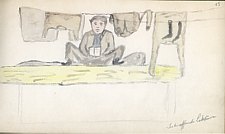
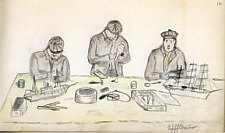
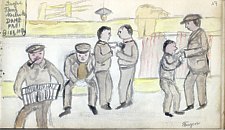
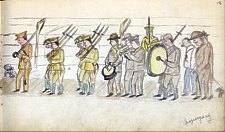
18: Spaziergang - Walk
The prisoners were allowed to take part in escorted marches accompanied by a camp band in the roads around Knockaloe until this was stopped after the sinking of the Lusitania in May 1915 after which exercise was done in a enclosed recreation field
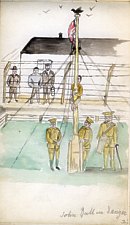
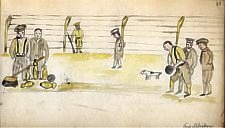
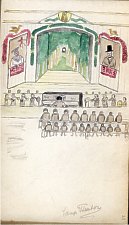
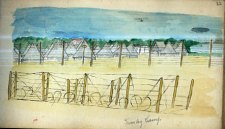
24:Titled Frimley Camp
Frimley Camp was one of the earliest camps established in August 1914 - at Frith Hill some 360 ft above sea level on heathland between Blackdown barracks and Brompton Sanatorium a few miles from Aldershot on poorly drained land with most accomodation in tents - one section for PoWs and one for civilian internees with some 2800 in total by mid September 1914 - by third week in October some 200 civilian internees sent to Douglas with the rest of civilian internees sent to IoM by end of November
Reference: Graham Mark Prisoners of War in British Hands during WW1 ; The Postal History Society 2007 ISBN 978-0-85377-029-9
26: Titled England rule the sea
U-boats which the German Navy had developed into a significant weapon were a major problem around the busy shipping lanes and in the Irish Sea.
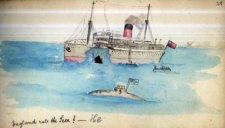
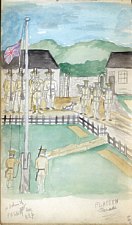
26: Flaggen Parade - Flag Parade
This shows the commandant's hut near the main gate - the better drawn illustration by G Stolz extracted from a greetings card of a collage of camp views shows the same scene viewed from the right of Schmitz's viewpoint.
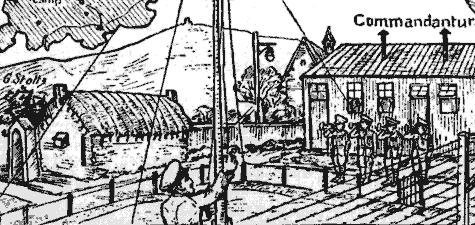
The background in Schmitz's view looking south shows Dalby Mountain and South Barrule - that of Stolz is possibly Slieu Whallian, and also shows the gable end of Patrick School and more interestingly an old thatched cottage which is probably that shown on the 1868 plan slightly to the north of the road into the camp. The other side of the commandant's hut would face the camp road
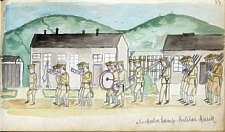
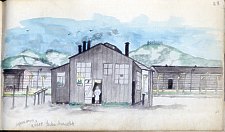
28: Schulhaus & Kuche Seiten Ansicht - Schoolhouse & Kitchen side view
#30 shows the kitchen hut face on
29: Titled Morgenparade [morning parade/roll call]
According to Vielhauer this would take place about 9-10am - the parade would appear to be led by the compound NCO wearing a MP (military police) armband followed by the camp sub commandant and a doctor
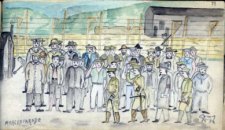
"Every morning between 9 and 10 o'clock the inspection takes place. The subcommandant or his representative goes with a small retinue through the Compounds and inspects the huts, the kitchen and the other buildings, as well as the prisoners themselves, who present themselves in the courtyard, hut-by-hut each behind each other in 2 ranks, hut-elders and table-elders at the front"
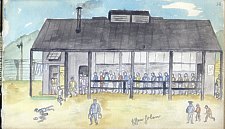
30: Title [unclear]
This would appear to show the collection of the meals for each table of ten men; at the left hand side is the small part occupied by the compound NCO
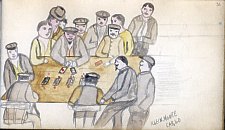
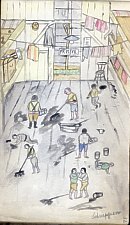
32: Title Schruppen - ? schrubben to scrub
Any trunks, chairs and folded tables are probably stored on the beds - the sign hanging from the washing line is 'hairdresser'
33: Burial party
The clergyman following the gaurds is probably Pastor Hartmann
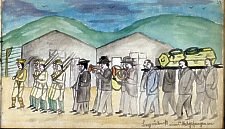
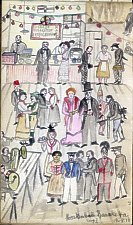
Masked Ball Hut 4A Camp I 8th August 1915
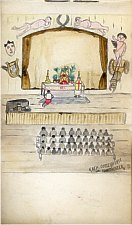
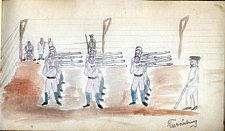
IoM Examiner 27th Feb 1915 reports a question in the House of Commons asking if German prisoners of war at Knockaloe were allowed to drill under their own instructors with dummy rifles; and whether some other form of exercise would be substituted for this practice. The Home Secretary Mr McKenna stated that some of the prisoners were using pieces of cut to resemble rifles and I gave instructions at once that the practice should be stopped.
One of the humourous asides from Mr W Thorne (Lab - West Ham) "Can't you supply some of our soldiers with boxing gloves to keep them in order?" was actually quite forseeing as the camp was reputed to be the birthplace of German Boxing..
37: Meine Kase
My Case?
